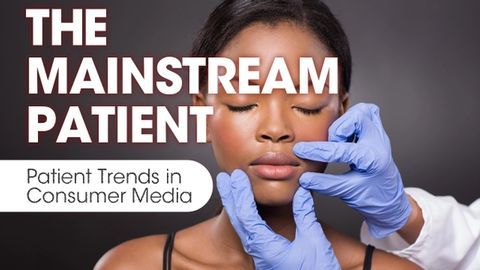- Case-Based Roundtable
- General Dermatology
- Eczema
- Chronic Hand Eczema
- Alopecia
- Aesthetics
- Vitiligo
- COVID-19
- Actinic Keratosis
- Precision Medicine and Biologics
- Rare Disease
- Wound Care
- Rosacea
- Psoriasis
- Psoriatic Arthritis
- Atopic Dermatitis
- Melasma
- NP and PA
- Skin Cancer
- Hidradenitis Suppurativa
- Drug Watch
- Pigmentary Disorders
- Acne
- Pediatric Dermatology
- Practice Management
- Prurigo Nodularis
- Buy-and-Bill
Article
The Mainstream Patient: April 17
Author(s):
This week's edition of the Mainstream Patient features stories about the risks of phenol peels, the pros and cons of skin cycling, how to prevent stretch marks during pregnancy, and more.

New this week: Allure talks to dermatologists about the risks of phenol peels and Elle lists 27 women-founded brands to shop from in April. NewBeauty discusses the pros and cons of skin cycling with dermatologists and Byrdie reveals how to prevent stretch marks during pregnancy. Women's Health gives an overview of how face toner works and how to use it and Self explains how to discuss skin concerns with doctors.
Are Phenol Peels Worth the Risks? What to Know About the Controversial Treatment
"'A phenol peel is one the strongest peels available,' says Blair Murphy-Rose, MD, a board-certified dermatologist based in New York City. So strong, in fact, that it’s sometimes administered under IV sedation. Without it, the pain would be pretty terrible, even with a topical numbing cream. And due to the corrosive strength of the phenol, a full recovery can take months (and the early phases can be a little er — gruesome)."
The 27 Best Women-Founded Brands to Shop This Month
"It's Women's History Month. During this time of reflection on all that women have achieved and overcome, we salute those around the world that identify as women. Women in beauty hold a special place with the ELLE.com Beauty Team (and not just because they make some bomb products), but because beauty is so personal, and we are thankful to the brands that create products to help women feel good."
Is “Skin Cycling” Right For You? Experts Share the Pros and Cons
"According to Denver dermatologist Joel L. Cohen, MD, the idea of reserving some treatments for certain days a week, while resting others, has been common in dermatology for decades. 'In the 1990s, to limit risks of topical steroid adverse effects like atrophy, some physicians at UCSF recommended topical steroids on the weekends, while other topical agents during the week,' Dr. Cohen explains. 'This is still common with patients with psoriasis and eczema.'"
How to Prevent Stretch Marks During Pregnancy, According to Experts
When stretch marks pop up, the skin may look thinner, or the stretch marks may appear as depressed lines on the skin. Depending on skin color or how long the stretch marks have been around, they can appear reddish, purple, silver, white, dark gray, or black. 'In lighter skin, they typically appear red initially and then they fade to white or lighter, and in darker skin, they may begin very dark or hyperpigmented and fade to a lighter brown color, says board-certified dermatologist Tiffany Clay, MD.
What Face Toner Does And How To Use It, According To Dermatologists
"At one point, toner was the go-to recommendation for oily-skinned teens who needed to zap breakouts and shine. But over time, it became relegated to the beauty back burner due to a common drawback: Many formulas contained alcohol that ultimately dried out the skin. But experts say toners deserve a second look, that they've come a long, long way in recent years. Today, the product isn't one-size-fits-all. You can find a variety of formulas designed for a variety of skin types for more targeted application—even toners that can nourish skin during the upcoming drying winter months. 'Facial toners have made a comeback thanks to the widespread popularity of Korean 10-step skincare regimens, says Christine Choi Kim, MD, a dermatologist based in Los Angeles.
What to Do If You Feel Like Your Doctor Isn’t Taking Your Skin Problems Seriously
"Whether it’s your first or 15th time seeing a dermatologist for a particular issue, the more clearly you can explain what’s going on, the better, Hadley King, MD, a clinical instructor of dermatology at the Weill Medical College of Cornell University in New York City, tells SELF. Detail exactly what types of treatments (both prescription and over-the-counter) you’ve tried; how long you tried them for; and what their effects were, positive or negative, Dr. King explains. 'Try to communicate calmly and be as specific as possible: ‘I tried X treatment for X amount of time, and this is how my skin reacted,’” she says."


